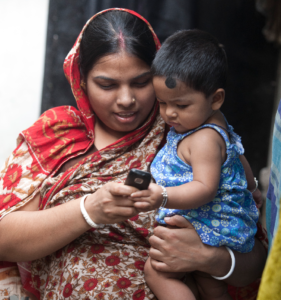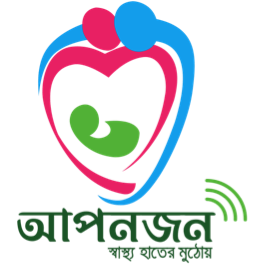 When a client’s health status changes (for the good, such as with a planned pregnancy, or for the worse, such as being diagnosed with diabetes), the person often is highly motivated to make changes in their life and may succeed in adopting a new behavior. But daily life comes with myriad challenges that complicates clients’ ability to sustain behavior change.
When a client’s health status changes (for the good, such as with a planned pregnancy, or for the worse, such as being diagnosed with diabetes), the person often is highly motivated to make changes in their life and may succeed in adopting a new behavior. But daily life comes with myriad challenges that complicates clients’ ability to sustain behavior change.
Challenge
Motivating clients to start healthy behaviors is a necessary first step toward achieving positive health outcomes. However, it is difficult to maintain those initial gains over time. Chronic conditions such as tuberculosis (TB) or diabetes require vigilance and strict adherence to a treatment regimen, but clients often stop taking drugs or continue eating sugary foods. The rise in drug resistance further demonstrates that people don’t regularly complete their prescribed courses of treatment.
Research shows that between 30 and 70 percent of clients do not adhere effectively to treatment recommendations. Non-adherence to difficult behavioral recommendations, such as smoking cessation or following a restrictive diet, more than 80 percent of patients. The reasons are varied: providers may confuse the client with unclear instructions, or clients may not fully appreciate the consequences of not maintaining behaviors, or they may not believe that they can follow the behavior change or regimen as instructed. Some behavioral changes interfere with daily activities, such as medications that require multiple doses each day or those with special instructions (e.g., “take with food”). Side effects of treatment can also cause embarrassment. Families or communities may not maintain their support of behavior change, finding the changes uncomfortable or inconvenient. Stigma, discrimination, and social norms also strongly influence behaviors. Illnesses such as TB, HIV, and cancer all have social stigma attached to them, so patients may not want to be open about their condition, complicating behavior changes or behavioral maintenance.
Chronic disease management also challenges overburdened health systems. It is important to monitor chronic conditions, but service providers may struggle to fully engage in managing stable clients when crises or emergencies arise.
Response
Service communication supports long-term behavior change through a number of strategies and tactics that encourage continued adherence to changed behaviors. These can include tools such as SMS prompts or reminder calls for daily medications and client support group meetings.
Ongoing counseling can provide clinical support to clients, while community-based initiatives (e.g., support groups or clubs) encourage clients to overcome challenges and have been demonstrated to encourage adherence. Social and behavior change communication (SBCC) at the community level can also reinforce healthy behaviors such as correct and consistent condom use (to prevent HIV, other sexually transmitted infections, and unwanted pregnancy) or bednet repair and maintenance to prevent malaria.
Increasingly, information and communication technology makes it possible to reach target audiences instantaneously and privately. Hotlines, chat rooms, and SMS can quickly answer questions, eliminating the need for a visit to the facility. “Push” messages that are sent unprompted can provide information and remind clients of important behaviors, such as taking medication or keeping a medical appointment. A 2015 Cochrane review of mHealth in family planning concluded that “evidence indicates that a series of voice messages and counsellor support can improve contraception amongst women seeking abortion services not wanting to get pregnant again at the current time, and data suggest that daily educational text messages can improve continued use of the contraceptive pill.” An earlier review of text messaging and antiretroviral therapy (ART) adherence noted that “Weekly mobile phone text messages to patients on ART can help them to take their medication every day. It can also help to reduce the amount of HIV in their bloodstream.”
Case Study – Aponjon in Bangladesh
Challenge
 Since the 1990s, Bangladesh has made great strides to reduce maternal and infant mortality, reducing maternal mortality ratio from 574 to 194 between 1990 and 2010. But gaps remain, particularly for poor women. In 2011, only 20 percent of women were attending the recommended four prenatal visits and almost half of pregnant women had anemia. Among women in the poorest quintile, 71 percent had their first child before age 18 and only 9 percent delivered with a medically trained provider. Meanwhile, trained providers were scarce, with just 3 doctors and 2.8 nurses for every 10,000 Bangladeshis
.
Since the 1990s, Bangladesh has made great strides to reduce maternal and infant mortality, reducing maternal mortality ratio from 574 to 194 between 1990 and 2010. But gaps remain, particularly for poor women. In 2011, only 20 percent of women were attending the recommended four prenatal visits and almost half of pregnant women had anemia. Among women in the poorest quintile, 71 percent had their first child before age 18 and only 9 percent delivered with a medically trained provider. Meanwhile, trained providers were scarce, with just 3 doctors and 2.8 nurses for every 10,000 Bangladeshis
.
Response
Whereas 55 of every 100 people have access to health services in Bangladesh, 64 out of 100 Bangladeshis are mobile phone subscribers. This high-level mobile phone penetration allowed the Mobile Alliance for Maternal Health Action (MAMA) to use mobile phone technology to reach pregnant women and new mothers with maternal and child health education. MAMA was a public-private partnership launched in May 2011 by USAID and Johnson & Johnson that operated in India, Bangladesh and South Africa. In Bangladesh, the not-for-profit social enterprise Dnet initiated the service and continues to run the initiative, known as Aponjon (“Dear One” in Bangla).
Aponjon is a subscriber service that targets expecting and new mothers and their guardians (husbands, mothers-in-law, and other family members) to communicate important health information about all stages of pregnancy and a child’s first year. Pregnant women, new mothers, and their families are recruited to join and pay a small fee (the service is free for poorer households). After registration, Aponjon delivers SMS or voice messages twice a week to pregnant women and delivers a weekly message to a caregiver. These messages counter common misconceptions, highlight potential health dangers and warning signs, locate nearby healthcare services, and highlight the benefits of family planning. The messages are tailored to the stage of pregnancy or the child’s age and, depending on a subscriber’s location in an urban or rural setting, different types of messages are sent, contextual to subscriber’s surroundings.
Messages use different formats to convey information, with messages delivered by an engaging female doctor character, “Daktar Apa,” who is seen as a trusted source of health information for women. Voice messages use a dramatic and engaging format, featuring local actors playing the roles of doctors, women, and families discussing issues like the importance of iron-rich food and reminding pregnant woman about medical checkups. Text messages communicate information about medical emergencies and warning signs during pregnancy.
After a successful pilot in four districts, Aponjon began scaling up, expanding to more than 35 districts in Bangladesh in 2012. In 2013, Aponjon introduced a hotline that allowed doctors to give advice to registered mothers and family members. The mobile app, Aponjon Shogorbha (Pregnancy), which has been developed to reach mothers with smartphones, provides a more comprehensive platform for expecting and new mothers to learn about prenatal and neonatal health (available on Google Play, in the Apple App Store and Windows Phone App Store). The app helps women monitor their pregnancies, estimating due dates, monitoring weight gain, and keeping track of appointments and reminders. The app even suggests healthy menus for pregnant women, allowing them to create healthy menus that cover calorie requirements, and describes how the baby is developing during pregnancy.
Aponjon promotes its services through branded buses, information, education, and communication materials, and community events such as health fairs.
Results
In 2016, four years since the pilot, Aponjon had reached more than 1.5 million subscribers.
A quantitative evaluation conducted in September 2015 found that women who participated in Aponjon attend the recommended number of antenatal check-ups at rates more than three times the national average. These same women are more than twice as likely to give birth in a health facility. Results also indicated that respondents who had used Aponjon for a minimum of 6 months, received at least three messages per month, and carefully listened to most of the messages not only showed increased knowledge, but also were more likely to adopt good maternal and newborn healthcare practices.
Aponjon has also launched an app targeting adolescents with sexual and reproductive health information, as well as a hotline and web chat. The app also engages caregivers by allowing them to monitor the information Aponjon provides to their adolescents.
Application
Mobile technology is one strategy that responds to a number of health maintenance challenges, automating reminders and supporting those who are tasked with maintaining specific health behaviors. mHealth provides more interaction than the standard flipchart and prompts providers to touch on all important points, and can assist with supportive supervision by speeding data collection and analysis and providing supervisory job aids.
mHealth shows promises for reducing service providers’ workload and improving health outcomes. The possibility of anonymity can help reach hidden, sensitive, or otherwise hard-to-reach populations with information tailored to different audiences.

